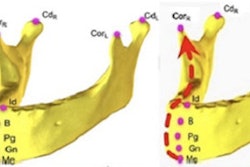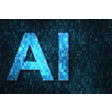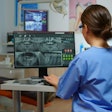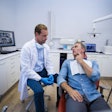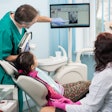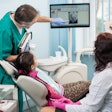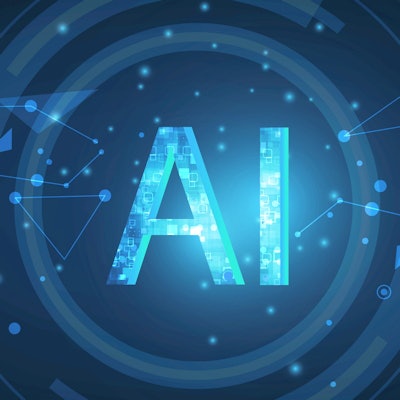
The dental industry is on the cusp of a revolution in patient care and the delivery of successful outcomes, driven by the rise of artificial intelligence (AI) in key clinical procedures like x-ray analysis and disease detection.
AI has the ability to help dentists conduct far more precise screenings of complex data to catch anomalies that would otherwise go undetected. And it can do this more rapidly and with greater accuracy than traditional methods.
But this change to integrating AI into dental screening practices will not come about by itself, nor is AI entirely infallible. To successfully navigate this transition, the dental industry must implement the technology carefully and deploy solutions that have been designed with the highest efficacy and accuracy in mind and which have been rigorously tested.
New way of thinking
 Florian Hillen.
Florian Hillen.AI is not like previous generations of software, which were designed to perform specific tasks and to function as intended right out of the box. AI must be trained, usually by exposing it to vast amounts of data and monitoring how it behaves; that is, how it alters its own programming to deal with new and more complex situations.
Much of the initial training is done before the AI is introduced to a real-life clinical setting. The goal is to provide it with enough experience to deliver results that align with most expectations.
However, few dental practices -- even newly consolidated dental service organizations -- have access to the volume of data needed to train an AI model fully. Most algorithms are subjected to millions of datasets before they are put into use, and when the application is health-related, this can become tens if not hundreds of millions of datasets.
This is why AI training must encompass industrywide data collection. In this way, AI can quickly be exposed to all the nuances that arise in clinical practice, something that can take even the most adept dentist an entire career to master.
Patient care depends on timely, accurate, and complete identification of all instances of disease, and the most accurate AI should increase pathology detection sensitivity without introducing false positives. For instance, most dentists acquire the skill to identify the true region on a typical x-ray that indicates tooth decay.
Nevertheless, the dental industry as a whole still exhibits significant numbers of both false-negative and false-positive rates of identification. However, recent comparisons between dentists equipped with highly accurate AI and those without showed a significant improvement in true-positive identifications. AI-equipped dentists reduced the number of missed cavities by 43% and reduced false positives by 15%.
By augmenting clinical decisions at the chair, dentists can increase case acceptance and lower costs for patients by providing the right treatments at the right time. It goes without saying that an accurate diagnosis and the right level of treatment greatly improve clinical outcomes and dramatically lower the cost of dental care, primarily by avoiding unnecessary procedures.
Intelligent and ethical AI
Proper training of AI models also helps in the crucial area of ethical treatment. In dentistry, just as in all areas of healthcare, AI must be effective across diverse patient populations to ensure providers deliver the most accurate diagnoses.
Better-trained models that are fed more diverse datasets have the highest propensity for disease detection precision. This paves the way for more appropriate treatment recommendations and the opportunity to foster deeper levels of trust with patients.
Ensuring this diversity in data models can be challenging, however, because at some point, a decision must be made to "lock the algorithm in," which can impact how aggressively the AI will make certain predictions.
In some cases, this can be beneficial, because it will account for greater instances of medical anomalies in certain groups, or it can overidentify them in others, again leading to misdirected care or overtreatment of the patient.
For this reason, it is best to leave AI training in the hands of the experts, both in the medical field and in data science and analytics. Although AI has a long history -- going back decades, in fact -- only recently has it made its way into real-world critical professions like dentistry. And as any medical professional knows, all cases are different. When viewing data -- whether from an image, test results, or some other source -- at the speed and granularity that AI is capable of, unique situations are bound to arise.
This is where dental professionals need to be on their collective guard, since they are the ones with the experience to know what is reasonable and what may be an outlier. Carefully crafted AI can be a powerful clinical tool that helps ensure patients receive an accurate diagnosis and elevates the standard of care while improving patient outcomes and office efficiency.
Florian Hillen is the CEO and founder of VideaHealth, a dental technology company that uses AI to detect diseases in dental imaging. Previously, he founded the startup Ninu and worked at McKinsey & Company and Eko, where he helped develop a stethoscope that automatically analyzes heart sounds. Hillen has two master's degrees, one in computer science and another in technology and policy, from the Massachusetts Institute of Technology, as well as a medical degree and a business degree from Loyola Marymount University and the Technical University of Munich.
The comments and observations expressed herein do not necessarily reflect the opinions of DrBicuspid.com, nor should they be construed as an endorsement or admonishment of any particular idea, vendor, or organization.






